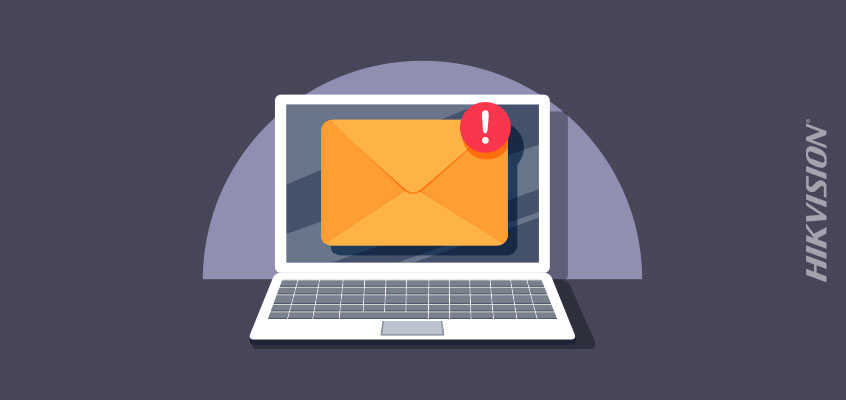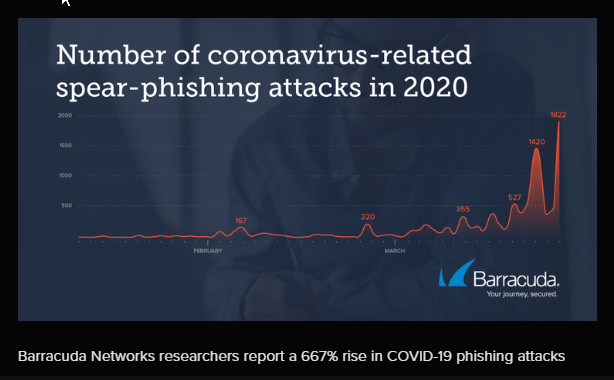Le directeur principal de la cybersécurité de Hikvision fait référence à la hausse des attaques d’hameçonnage reliée au COVID-19 et offre sa cyberastuce hebdomadaire

Alors que COVID-19 devient une préoccupation mondiale, les cybercriminels exploitent cette tragédie pour propager leur propre type de virus afin de s'attaquer aux peurs des gens du monde entier. Le directeur principal de la cybersécurité de Hikvision, Chuck Davis, a récemment discuté de l’hameçonnage et des logiciels malveillants liés au coronavirus.
Dans ce blogue, M. Davis de Hikvision fait référence une forte augmentation des escroqueries par hameçonnage liées aux coronavirus en février, et propose une astuce hebdomadaire pour éviter d'être victime de piratages ou d’autres cyberattaques.
Les attaques d’hameçonnage augmentent de plus de 600% en février
Les chercheurs de Barracuda Networks ont constaté une augmentation constante des attaques d’hameçonnage liées au coronavirus/COVID-19, et depuis fin février 2020, ils ont constaté une augmentation de 667% de ces attaques.
Sur le blogue Barracuda : ‘‘Entre le 1er mars et le 23 mars, Barracuda Sentinel a détecté 467 825 attaques par courriel d’hameçonnage et 9 116 de ces détections étaient liées au COVID-19, ce qui représente environ 2% des attaques. En comparaison, un total de 1 188 attaques de harponnage liées au coronavirus ont été détectées en février, et seulement 137 ont été détectées en janvier. Bien que le nombre total de ces attaques soit encore faible par rapport à d'autres menaces, la menace augmente rapidement.’’
En plus de partager quelques exemples des dernières attaques d’hameçonnage, Barracuda Networks a également donné quelques recommandations pour vous protéger contre ces attaques. Voici les conseils :
1. Méfiez-vous des courriels qui tentent d'amener les utilisateurs à ouvrir des pièces jointes ou à cliquer sur des liens.
2. Méfiez-vous des communications prétendant provenir de sources dont vous ne recevrez normalement pas de courriels.
3. Soyez prudent avec les courriels des organisations avec lesquelles vous communiquez régulièrement.
4. Trouvez des organisations caritatives crédibles et faites un don directement.

Cyberastuce de la semaine par Hikvision
Bien que tout le monde ne soit pas intéressé par la cybersécurité, Darknet Diaries est un podcast que tout le monde peut apprécier. Les podcasts sont devenus une partie importante de la vie de nombreuses personnes. De plus en plus de gens aiment écouter des podcasts pendant les trajets domicile-travail ou lorsqu'ils partent en course, ou tout simplement pour échapper mentalement à la réalité de rester à la maison tout le temps.
L'animateur du podcast, Jack Rhysider est un professionnel expérimenté de la cybersécurité, mais son humble approche met en lumière ses invités, ses histoires fascinantes et ses idées pour rester au courant des dernières tendances en matière de cybersécurité. Vous n'avez pas besoin d'être un expert en cybersécurité pour écouter ce podcast, mais vous en aurez peut-être envie après avoir fini d'écouter.
Pour plus d'informations sur la cybersécurité, vous pouvez lire le blogue Hikvision : “Le directeur principal de la cybersécurité de Hikvision sur l'utilisation du Zero Trust Network pour répondre aux problèmes de sécurité.”
